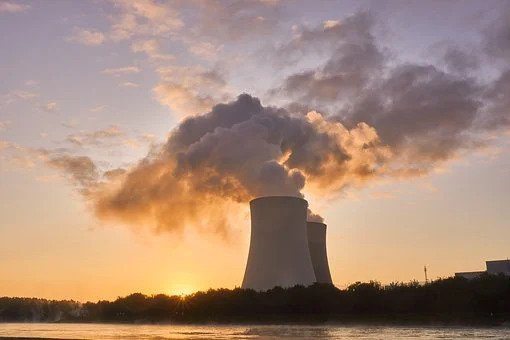A thermal energy station is a sort of force plant that utilizes a cycle of atomic parting to produce power. If you do not know what is the NPP full form if you do not know. They do this utilizing atomic reactors in blend with the Rankin cycle, where the warmth produced by the reactor changes over water into steam, which pivots a turbine and a generator. Atomic force furnishes the world with about 11% of its all-out power, with the biggest makers being the United States and France.

Aside from the wellspring of warmth, thermal energy stations are like coal-terminated force plants. In any case, they require various protections in light of the fact that the utilization of atomic fuel has essentially various properties from coal or other petroleum products. They determine their nuclear energy by parting the core of particles in their reactor centers, with uranium being the significant fuel elective on the planet today. Thorium additionally has likely used in the atomic force age, despite the fact that it isn’t presently being used.
Parts And Activities
The reactor is a significant segment of a force plant, as it contains all atomic byproducts just as fuel and its atomic chain response. A reactor is a warmth hotspot for a force plant, similarly as a kettle is for a coal plant. Uranium is the major atomic fuel utilized in atomic reactors, and its splitting responses produce heat inside a reactor. This warmth is then moved to the coolant of the reactor, which gives warmth to different pieces of the thermal energy station.
Notwithstanding their utilization in power age, there are different sorts of atomic reactors that are utilized for exploration and clinical purposes just as plutonium produce, drive of boats, airplane and satellites. [4] The force plant incorporates reactors, yet additionally cooling towers, turbines, generators, and different wellbeing frameworks. The reactor is the thing that makes it not the same as other outside heat motors.
Steam Age
The creation of steam is regular in all thermal energy stations, however, the technique for doing it shifts enormously.
The most well-known force plants on the planet utilize compressed water reactors, which utilize two closures of flowing water to deliver steam. [6] The principal circle conveys the amazingly hot fluid water to the warmth exchanger, where water is coursed at a low pressing factor. It at that point warms up and becomes steam, and would then be able to be shipped off the turbine area.
Bubbling water reactors, the second most regular reactor in power age, heat the water in the center straightforwardly into steam.
Turbines And Generators
Whenever a stream is created, it goes through at least one turbine at high pressing factors and paces. This ascent to very high paces, making the steam lose energy and, thusly, consolidate once again into cool fluid water. The revolution of the turbines is utilized to turn an electric generator, which produces power that is conveyed of the electrical lattice. [8]
Water Cooling Tower
Maybe the most famous image of the thermal energy station is the cooling towers, found in Figure 4. They act by dismissing the waste warmth into the environment by moving the warmth of the high temp water (from the turbine area) to the cooler of the external air. 4] Hot water is cooled by openness to air and a little part, about 2%, dissipates and transcends the top. Furthermore, these plants discharge no carbon dioxide – the essential ozone-depleting substance that adds to environmental change. Snap here to perceive how the cooling tower functions.
Numerous thermal energy stations redirect squander warmth to a stream, lake, or ocean as opposed to cooling towers. Numerous other force plants, for example, coal-terminated force plants, likewise have cooling pinnacles or enormous waterways. This likeness exists on the grounds that the way toward changing overheat into power is practically indistinguishable between thermal energy stations and coal-terminated force plants.
Effectiveness
The effectiveness of a thermal energy station is resolved similarly to other warmth motors ? in light of the fact that actually the plant is an enormous warmth motor. The measure of electric force delivered for every unit of nuclear energy gives the plant its warm effectiveness, and there is a furthest breaking point to how productive these plants can be a direct result of the second law of thermodynamics.
Average thermal energy stations accomplish around 33?37% proficiency contrasted with fossil-energized power plants.

As the editor of the blog, She curate insightful content that sparks curiosity and fosters learning. With a passion for storytelling and a keen eye for detail, she strive to bring diverse perspectives and engaging narratives to readers, ensuring every piece informs, inspires, and enriches.









